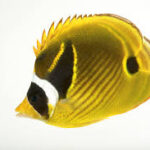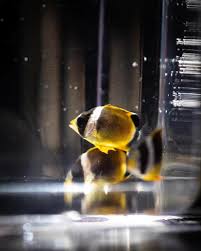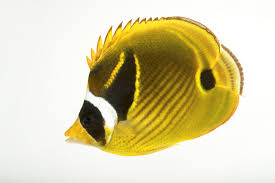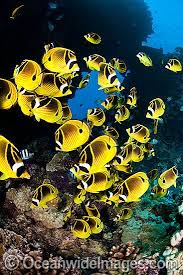
The image of the dragon is one of the oldest and most widespread symbols in human history. Known for its power, mysticism, and cultural significance, the dragon has been portrayed in art across diverse civilizations and cultures for centuries. From ancient mythology to modern interpretations, dragons have evolved into dynamic representations that merge tradition and innovation. Today, the dragon serves not only as a powerful mythical creature but also as a source of inspiration in the world of modern art. This article will explore the journey of the dragon in modern art, tracing its roots, cultural transformations, and contemporary reinterpretations in various artistic forms, such as visual arts, digital media, and street art.
The Dragon in Mythology and Early Art
To understand how the dragon evolved into its modern artistic form, it’s essential to examine its origins and early depictions in art and mythology. The dragon is a creature of contradictions—often seen as both a symbol of destruction and creation, both a feared beast and a revered deity. Across various cultures, the dragon symbolizes strength, wisdom, protection, and chaos. The diversity of dragon representations in ancient and classical art has provided a rich source for modern reinterpretation.
1. Dragons in Eastern Mythology
In Eastern cultures, particularly in China, Japan, and Korea, the dragon is revered as a divine creature that embodies good fortune, power, and protection. Chinese dragons are traditionally benevolent beings associated with imperial authority, rain, and agricultural fertility. In Chinese art, dragons are often depicted in fluid, serpentine forms, with long, coiling bodies and auspicious symbols such as clouds and pearls. These early representations were often seen on scrolls, ceramics, and imperial robes, where they symbolized the emperor’s divine right to rule.
Japanese dragons, influenced by Chinese traditions, are similarly powerful but are also closely associated with natural elements like water and storms. The intricate depictions of dragons in Japanese art, particularly in ukiyo-e prints, emphasize both their strength and their elegance. As in China, Japanese dragons also serve as protective figures, safeguarding temples, shrines, and important cultural artifacts.
2. Dragons in Western Mythology
In Western cultures, dragons have a more ambivalent role, often depicted as menacing creatures to be slain by knights or heroes. Medieval European art, particularly in illuminated manuscripts and tapestries, features dragons as embodiments of evil, often guarding treasures or threatening the kingdom. The image of the dragon as an adversary is prominently showcased in the myth of St. George, where the dragon is a symbol of sin and disorder. These depictions reinforced the idea of the dragon as a formidable yet ultimately vanquishable enemy, representing the triumph of good over evil.
The Dragon’s Transformation in Modern Art
As societies transitioned from the classical to the modern age, the representation of the dragon evolved in response to changes in culture, technology, and artistic movements. In the 19th and 20th centuries, the dragon’s role in art shifted from being a simple symbol of mythological power to a more complex figure that integrated elements of fantasy, surrealism, and individual expression.
1. Romanticism and the Dragon as a Symbol of the Sublime
In the late 18th and early 19th centuries, the Romantic movement brought a resurgence of interest in mythology and the supernatural. Artists of this period were fascinated by the concept of the sublime—a feeling of awe mixed with terror when confronted with nature’s overwhelming power. The dragon, with its immense strength and otherworldly presence, fit perfectly into the Romantic ideal of the sublime.
In paintings by artists such as J.M.W. Turner and Gustave Doré, dragons were depicted as awe-inspiring creatures engaged in epic battles with heroes or forces of nature. These representations emphasized the dragon’s role as a symbol of untamed power, capable of evoking both admiration and fear. The Romantic dragon, often set against dramatic landscapes, encapsulated the tension between man and the forces beyond his control.
2. Surrealism and the Dragon as a Metaphor for the Unconscious
The early 20th century saw the rise of Surrealism, a movement that sought to explore the unconscious mind and the world of dreams. Surrealist artists like Salvador Dalí, René Magritte, and Max Ernst often turned to mythological creatures, including dragons, as metaphors for the irrational and the unknown. These creatures were often depicted in distorted, fantastical forms that challenged traditional representations of reality.
Dalí, for instance, incorporated dragon-like figures into his surreal landscapes, where they were juxtaposed with melting clocks and distorted landscapes. These dragons were not just physical entities but also symbols of psychological turmoil, representing the chaotic forces within the mind. By blending dreamlike imagery with mythological references, surrealist artists reimagined the dragon as a complex symbol that could convey both personal and universal themes of fear, desire, and transformation.
3. Expressionism and the Dragon as a Force of Emotion
Expressionism, which emerged in the early 20th century, focused on representing emotional experience rather than physical reality. In this context, the dragon became a symbol of intense emotion—both destructive and creative. Expressionist artists such as Ernst Ludwig Kirchner and Edvard Munch used dragons as motifs to explore themes of alienation, anxiety, and inner turmoil.
The dragon’s ability to transform and evolve in modern art allowed it to take on new meanings, from a representation of personal struggle to an embodiment of societal conflict. In some works, dragons were portrayed as monstrous creatures that reflected the artist’s own psychological battles, while in others, they symbolized a rebellious spirit challenging societal norms.
Dragons in Contemporary Art: Digital Media and Pop Culture
As we entered the late 20th and early 21st centuries, the dragon’s role in art expanded even further with the rise of digital media, video games, and popular culture. Dragons began to appear not only in traditional paintings but also in digital art, animation, and interactive media. These modern iterations of the dragon combine the mythological with the futuristic, reflecting both our fascination with the past and our embrace of new technologies.
1. Dragons in Video Games and Digital Art
One of the most significant ways the dragon has evolved in modern art is through its appearance in video games and digital media. Video games like The Elder Scrolls V: Skyrim, Dragon Age, and World of Warcraft have brought dragons into the realm of interactive entertainment, where players can engage with these creatures in dynamic ways. In these games, dragons are often portrayed as massive, highly detailed creatures that players can fight, befriend, or control. The digital medium allows for unprecedented flexibility in how dragons are designed, allowing them to have realistic textures, movements, and interactions with the environment.
Digital artists, too, have embraced the dragon as a subject for exploration. Through the use of software such as Photoshop, Blender, and Maya, artists can create hyper-realistic dragon designs, experimenting with textures, lighting, and movement in ways that were previously impossible in traditional mediums. These digital dragons can be both beautiful and terrifying, often serving as a bridge between fantasy and cutting-edge technology.
2. Dragons in Street Art and Graffiti
Street art and graffiti have become powerful forms of artistic expression, and the dragon has found its place in this urban landscape. Street artists often incorporate dragons into their work, using the creature as a symbol of resistance, transformation, or urban power. In these settings, dragons are reimagined as larger-than-life figures, sometimes blending with urban landscapes or appearing as vibrant, colorful murals on buildings and walls.
The dragon’s association with strength and rebellion makes it a natural fit for street art, which often challenges societal norms and reflects the spirit of counterculture. Whether in the form of a towering dragon mural or a graffiti tag, the dragon in street art embodies the energy and defiance of the modern world, transforming the mythological creature into a symbol of contemporary rebellion.
3. Dragons in Pop Culture: Movies, Television, and Comics
The dragon’s journey into modern art would be incomplete without acknowledging its prominent role in pop culture. From Game of Thrones to How to Train Your Dragon, dragons have become an integral part of contemporary storytelling. In movies, television shows, and comic books, dragons are portrayed in a variety of ways—sometimes as fearsome villains, other times as loyal companions or noble creatures.
In films like The Hobbit and Reign of Fire, dragons are depicted as massive, fire-breathing monsters that threaten human civilization. In contrast, animated films like Shrek and How to Train Your Dragon present dragons as more complex and sympathetic characters, allowing for a more nuanced portrayal of the creature. In comics and graphic novels, dragons are often used to symbolize power, magic, or mystery, serving as central figures in fantastical adventures.
Conclusion: The Ever-Evolving Dragon in Modern Art
The journey of the dragon in modern art is one that bridges the gap between ancient myth and contemporary expression. From its origins in Eastern and Western mythology to its modern representations in video games, digital art, and street art, the dragon has undergone a remarkable transformation. No longer confined to the realm of folklore, the dragon has become a symbol of creativity, power, and resistance, inspiring artists to push the boundaries of their craft.
As technology continues to advance and new forms of artistic expression emerge, it’s likely that the dragon will continue to evolve, taking on new forms and meanings in the ever-changing landscape of modern art. Whether depicted as a fierce monster, a wise creature, or a symbol of personal transformation, the dragon will always remain a powerful figure, embodying the infinite possibilities of human imagination.










